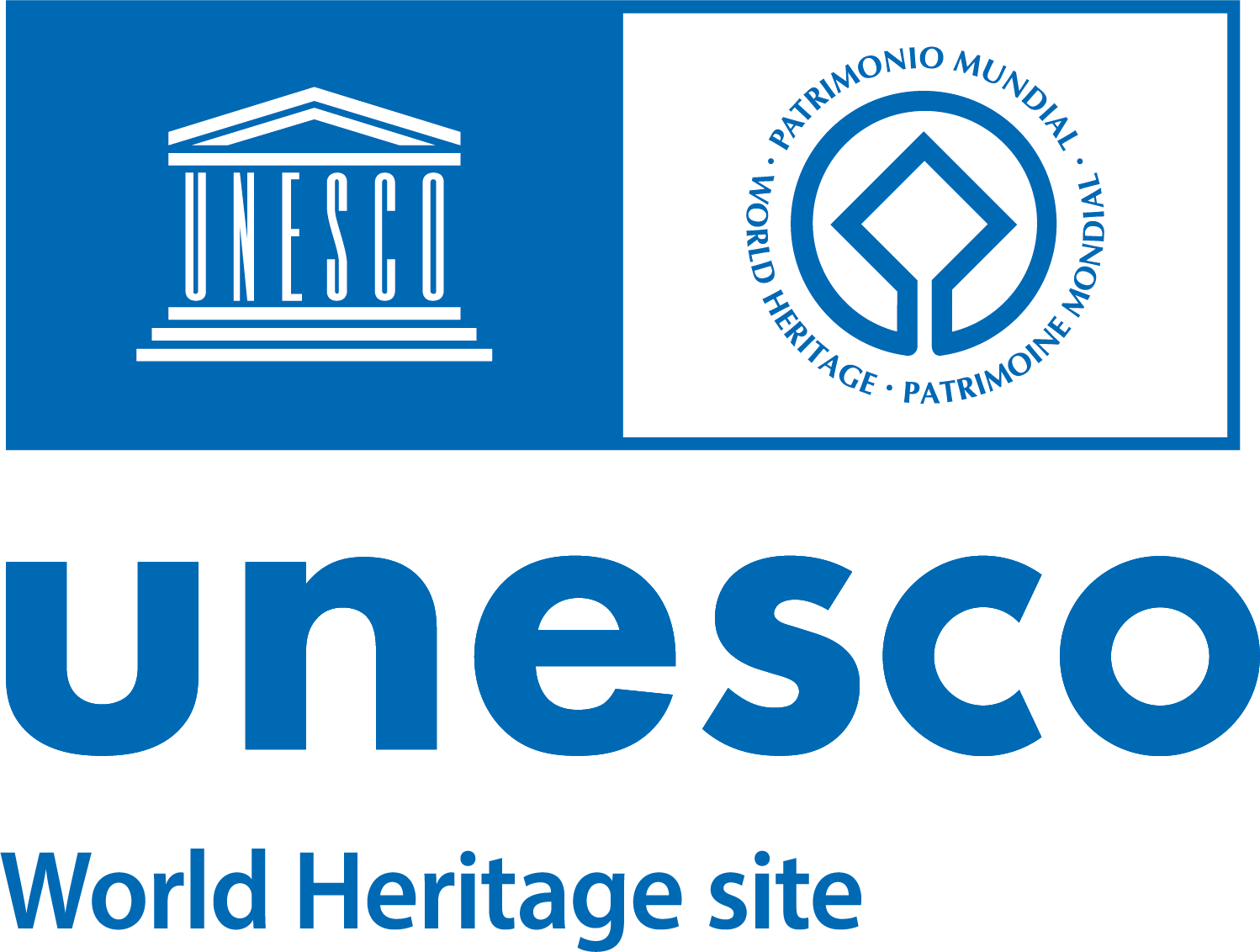Porta Cavalleggeri was built at the behest of Nicholas V (1447–1455), along the line of the Civitas Leonina, the defensive walls of the Vatican that Pope Leo IV had had erected after the sack of Saint Peter’s by the Saracens in 848. Known in the second half of the 15th century as Porta Turrionis, it was distinguished by a large semicircular embattled tower dating to the time of the High Middle Ages circuit, still visible near the Galleria Amedeo di Savoia, albeit in a context much altered by the modern road system.
The gate became known as Porta Cavalleggeri during the papacy of Pius IV (1559–1565), because it was close to the barracks of the Cavalleggeri, the light cavalry unit that guarded the papal residence and provided protection during solemn ceremonies.
Pius IV embellished the exterior face of the gate with a trough fountain fed by the Acqua Lancisiana spring. Still visible on the wall above the basin are the epigraphs and coats of arms commemorating its construction in 1565 for the use and convenience of the Cavalleggeri guard unit, and its restoration by Clement XI in 1713.
Rebuilt by Alexander VI during fortification work undertaken for the Holy Year of 1500, the gate was framed by a single line of ashlar blocks crowned by the papal coat of arms on the keystone.
Under Paul III, and in the context of the major works project carried out to bolster the city’s defences following the sack of 1527, Porta Cavalleggeri became a junction between the Vatican walls and the new defensive ring that was being planned for the northern slopes of the Janiculum Hill, definitively realized in the 1640s by Urban VIII, in the section from Porta Cavalleggeri to Porta San Pancrazio and Porta Portese.
It was one the main gates that remained open in 1656, when, due to an outbreak of plague, the health authorities ordered the closure of most entrances into the city in order to limit access.
A strategic point of access from the Aurelia, in 1849 the gate was the scene of fighting between soldiers of the Roman Republic and French troops.
In 1890, together with Porta Angelica, the gate was demolished during work to revamp the road system. The architectural decoration, coats of arms, inscriptions and the fountain were saved, however, and positioned along the adjacent stretch of wall. The trough was replaced by an ancient, reused sarcophagus.
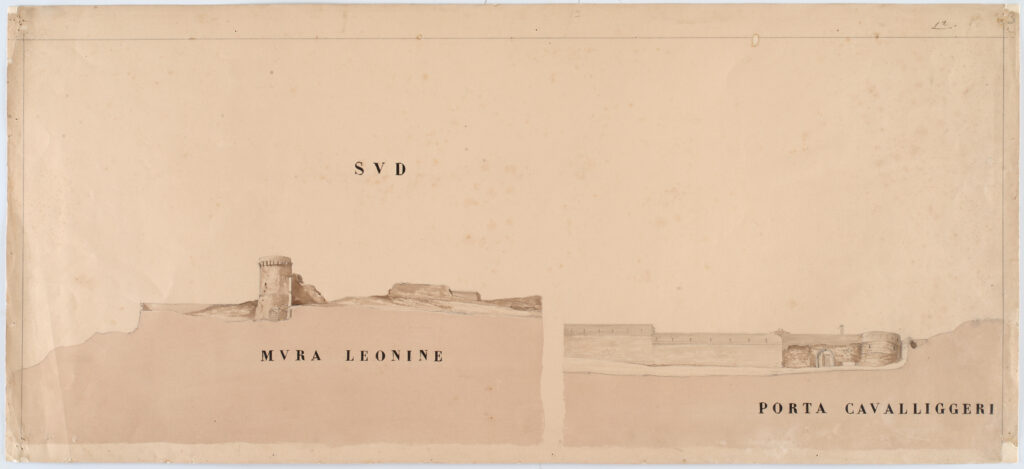
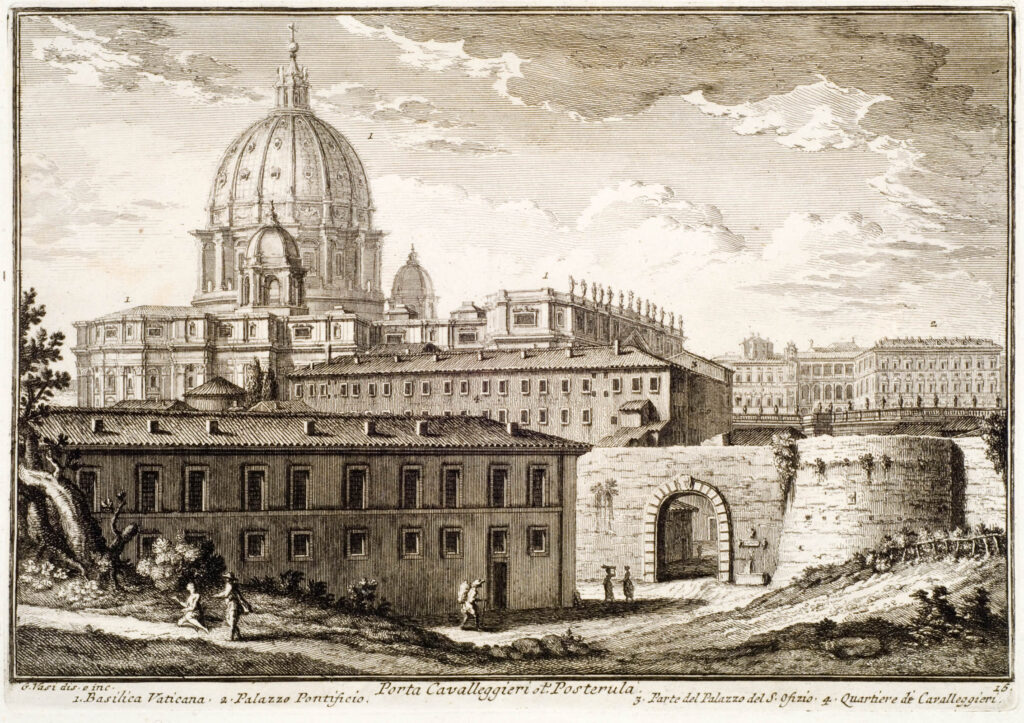
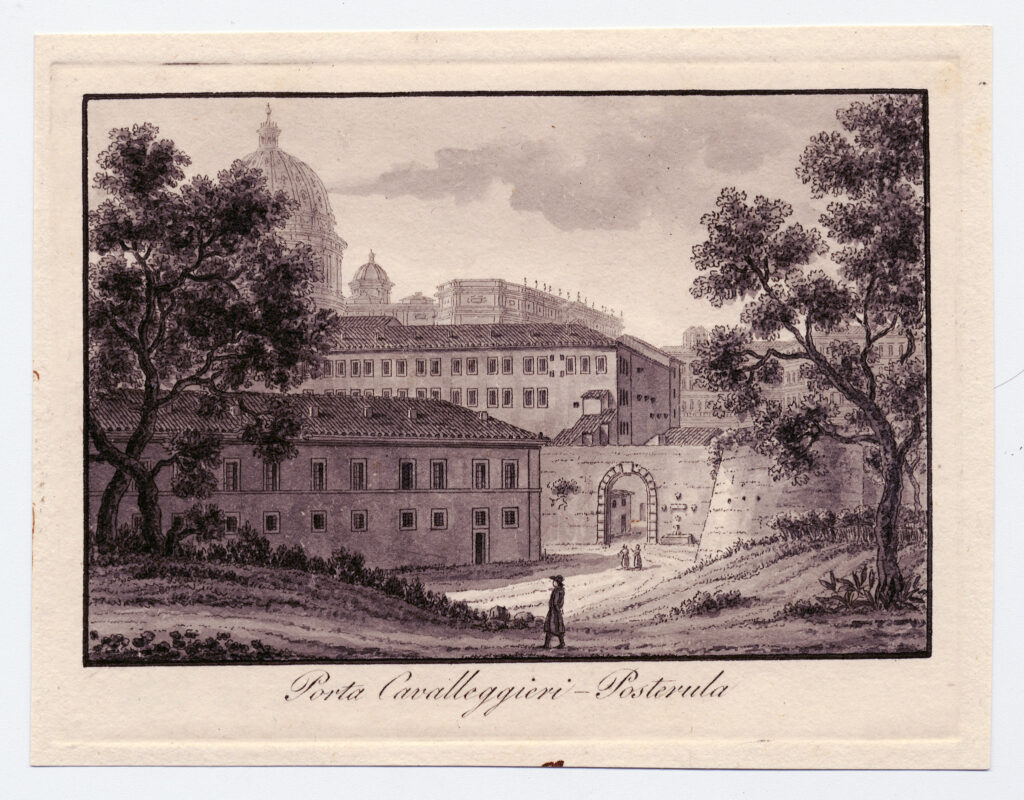
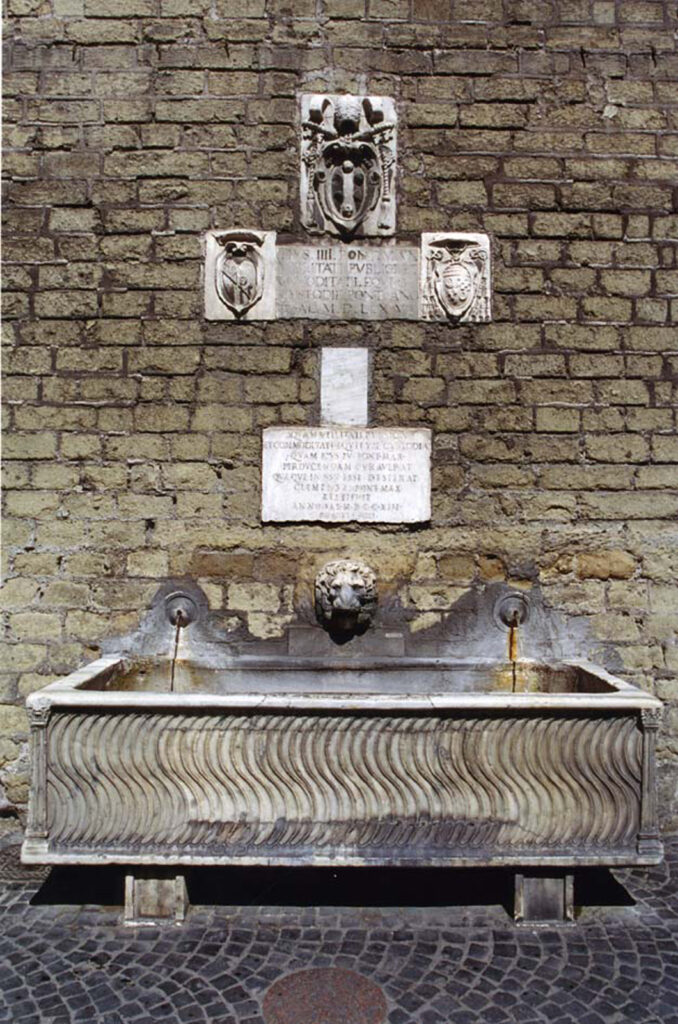


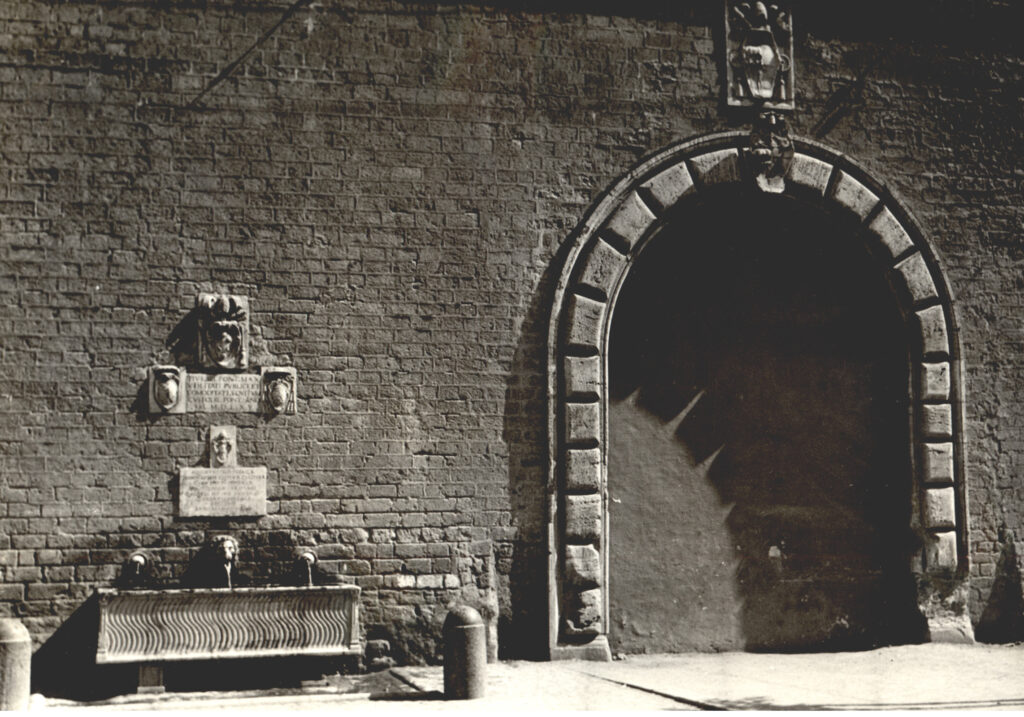
2. G. VASI, Porta Cavalleggieri olim Posterula, 1747, etching.
3. G.B. CIPRIANI, Porta Cavalleggieri – Posterula, 1817, acquaforte acquarellata
4. Sarcophagus fountain of Porta Cavalleggeri, 1565, sculpted white marble.
5. G. GASTALDI, Facies Exterior Porta Posterula vulgo Porta Cavalliggieri, 1684, etching.
6. Porta Cavalleggeri, 1870
7. Fountain of Pius IV rebuilt near the arch of Porta Cavalleggeri, 1938-1941.


